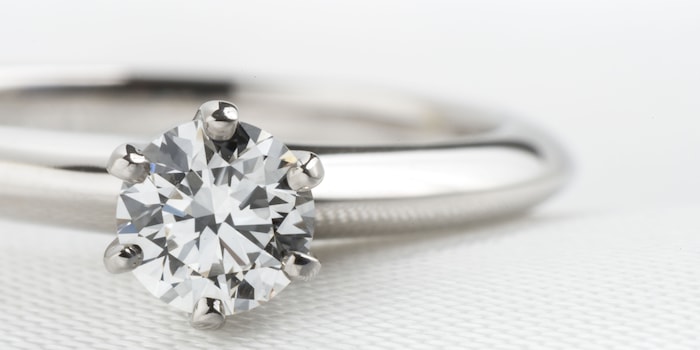

Diamond guide: What makes diamonds so valuable?
Diamonds are a girl's best friends - even Marilyn Monroe sang about gemstones. But what do we laypeople really know about these stones? They are valuable - but why? It's time to expand our knowledge of these sparkling treasures.
Where do diamonds come from?
Before we talk about the quality characteristics, it is important to know where our diamonds come from. These are mined in mines all over the world, including Australia, Africa and Canada. The diamond trade is a major source of income and support for the economies of many African countries, creating jobs and providing articles for the well-being of thousands of Africans.
It is not uncommon to hear about conflict diamonds or so-called blood diamonds: These gemstones originate from conflict zones where armed militias sell diamonds to finance their activities. In order to exclude these smuggled diamonds from the world market, it was agreed in the so-called Kimberley Agreement to control the origin of diamonds from conflict areas.
Define diamond quality: The 4Cs
The better the quality of a diamond, the more magnificent its fire, the more magical its charm and radiance. Two diamonds of the same size may initially look the same when viewed superficially. However, the values of these two diamonds can be completely different. The differences are actually not very great, but the effect is unmistakable. The "4Cs" of diamonds - carat, colour, clarity and cut - are the criteria for determining the quality and value of the stone.
"Clarity" - purity
Like no other gemstone, the diamond achieves the highest degree of brilliance in its perfection. However, it is only considered absolutely pure when it has no inclusions whatsoever. Too many or coarse inclusions partially prevent the incident light from being reflected. The diamond earns the title of "flawless" when internal features can no longer be recognised even by experts when magnified ten times.

"Carat" - weight
The carat, the diamond's unit of weight, determines its size. As a two-carat diamond is much rarer than two one-carat diamonds, it is therefore also more precious. However, the size of a diamond only increases its value if the other quality criteria are also met. This is rare enough, as the probability of small inclusions is correspondingly high in multi-carat stones. One carat (1ct) weighs 0.2 grams and is divided into 100 points. This means that a diamond with 25 points weighs 0.25 carats.
"Cut" - cut
Except for the cut, everything is given to the stone by nature. Here it mainly depends on the craftsmanship of your
craftsman who creates a masterpiece from the rough stone. The cutter therefore bears a great deal of responsibility. His employees can only have a small influence on colour and purity, but he has a decisive influence on the quality of the cut. What use is the highest level of colour and purity if the cut is poor and the incident light is not reflected by the stone in any way? There are various aspects of the cut that you should pay attention to when buying: symmetry, proportions and overall height.
Symmetry can be checked by asking the following questions: Does the diamond have an exact shape? For example, is the diamond really round? Are the facets symmetrical and correctly positioned? Is the number of facets correct? Do the top and bottom of the diamond match?
The correct proportions are important for the cut of a diamond. It is understandable, because the cutter tries to leave the weight of a stone, for example, over 1 carat. He gets more per carat for a 1 carat stone than for a 0.90. From an economic point of view, this makes double sense for the cutter (higher carat price and higher weight). However, the brilliance often suffers as a result.

Various, classic grinding shapes
If a 1-carat diamond does not have a diameter of ± 6.5 mm, it will show 1 carat on the scales, but visually it is not. If a 1 ct brilliant has a diameter of 6.2 or 6.3 mm, the proportions are not correct. The overall height of such a diamond is too high. It may be that the upper part is too high, the lower part too low, or both at the same time. The overall height of a brilliant-cut diamond should be between 59 and 62 per cent; the per cent figures always refer to the diameter of the diamond. At 57 per cent, the stone is too flat, from 64 per cent it is definitely too high. If the overall height is too flat or too high, the brilliance is reduced. The light entering the stone then escapes from the bottom or side of the stone and can no longer be optimally reflected to the viewer.
"Colour" - colour
The colour is a very important criterion for determining the quality of a stone. Although diamonds are usually found in their transparent form, flawless white colour is extremely rare. Cut diamonds often have the finest shades of yellow to brown. Slightly tinted stones are less valuable and are rarely used in jewellery. Just as rare as bright white diamonds are the so-called "fancy diamonds". These pink, blue, green or intense yellow collector's items are traded at top prices.

The most sought-after and most expensive are completely colourless diamonds (left). Slightly tinted stones are less valuable (centre). A very intense colour, on the other hand, is extremely rare and makes the diamond particularly valuable.
Jewellery with diamonds
And here for those who didn't know that Marilyn Monroe actually sang about diamonds
Friends, family, cats and good wine are my lifeblood.
Interesting facts about products, behind-the-scenes looks at manufacturers and deep-dives on interesting people.
Show all
